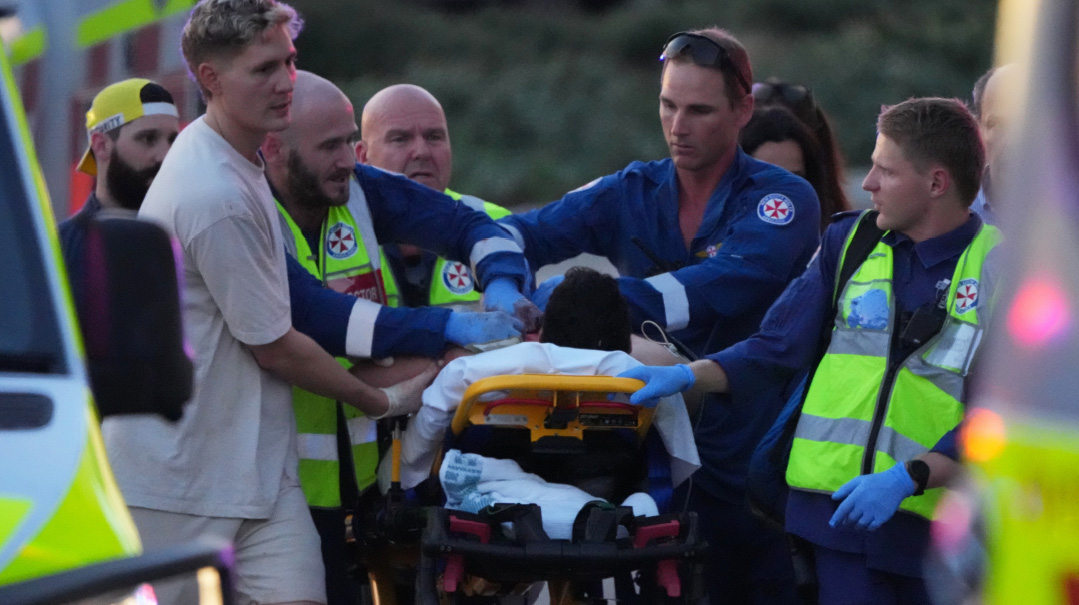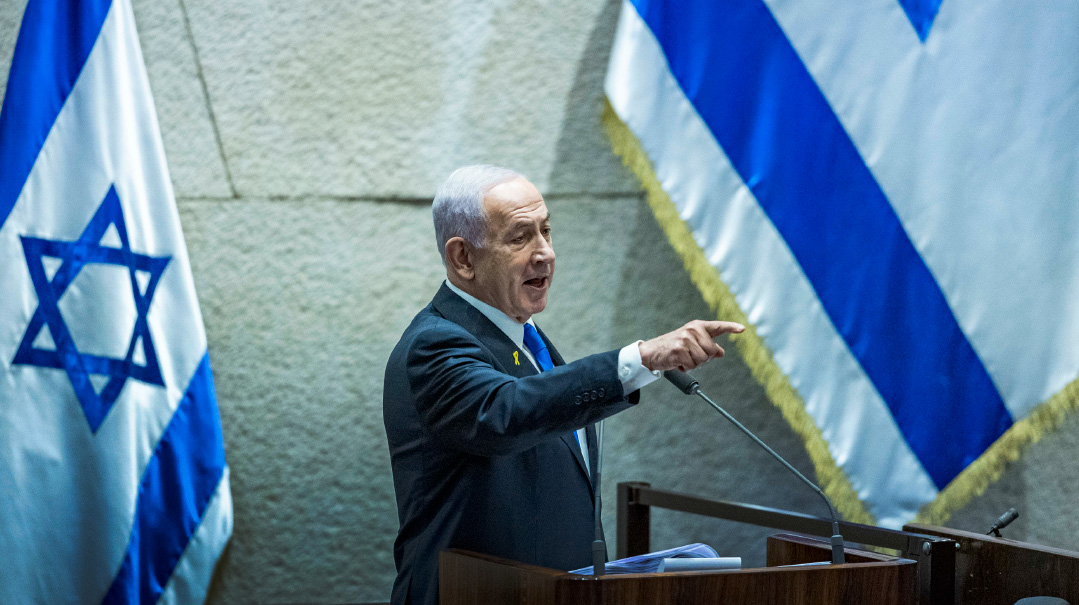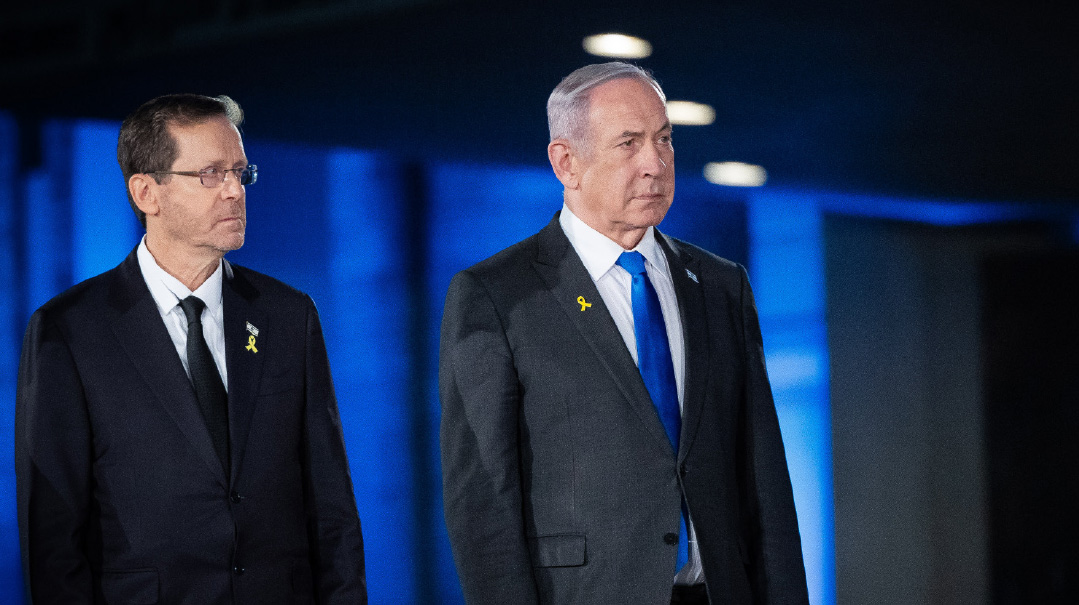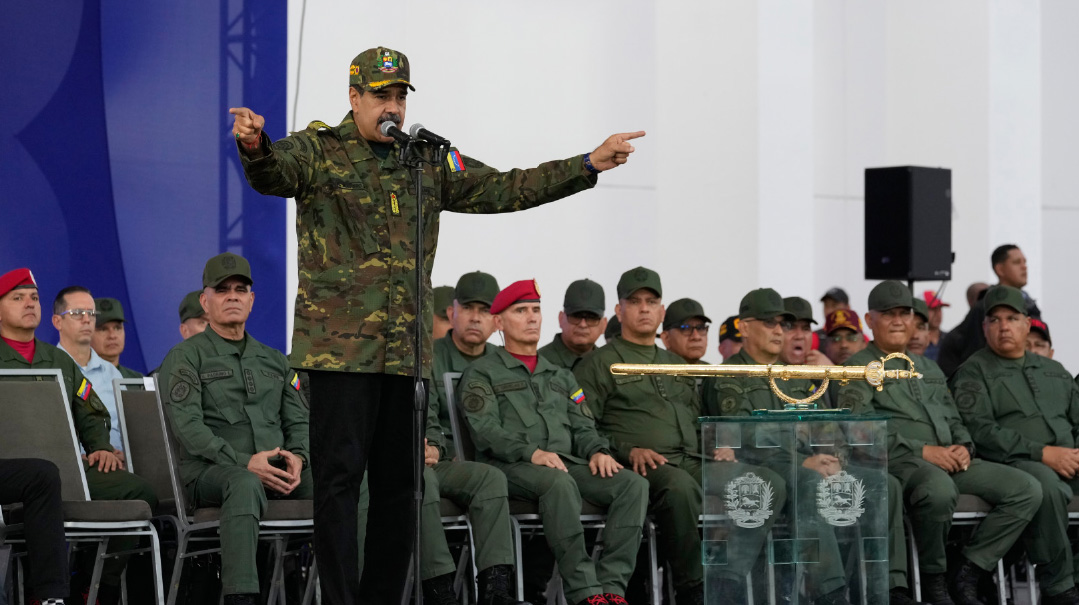Maryland’s Governor Larry Hogan Occupies a Remarkable Position

Maryland Governor Larry Hogan sits for a Q&A
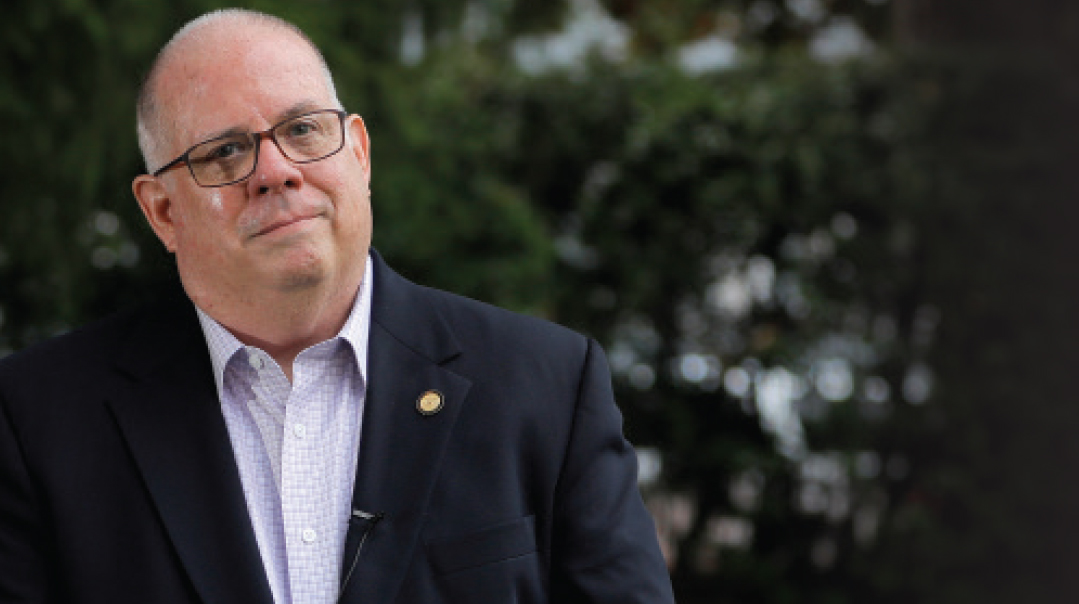
Maryland’s Governor Larry Hogan occupies a remarkable position. In fact, more than one. He is a popular Republican chief executive in a state that is deep blue — Democrats hold a party registration advantage of two to one. In his 2018 reelection bid, in the face of a national wave that gave Dems control of the US House of Representatives, Hogan racked up a record number of votes and became Maryland’s first GOP governor since 1954 to win a second term.
But he’s also something of an outlier in his own party. Championing what he calls “traditional Republican values,” he briefly toyed with the idea last year of mounting a primary challenge to his party’s president. The hopes of “Never Trumpers” nationwide were dashed when he decided to heed his wife’s advice and make good on his commitment to serve as Maryland’s governor.
In the meantime Hogan maintains strong approval ratings and has won generally high marks for how his state has weathered the coronavirus pandemic. He has overseen a gradual reopening plan for Maryland’s economy as COVID statistics have stayed within certain benchmarks. He has delegated authority to local officials — but has not been afraid to overrule them if he feels they have overstepped their bounds.
That is what happened in early August when chief health officer Dr. Travis Gayles of Montgomery County (the state’s biggest jurisdiction, largely a suburb of Washington, D.C.) issued an executive order closing private schools until October. (The public schools had already announced they would offer only online instruction.) Gayles claimed justification for the order because “the data does not suggest that in-person instruction is safe for students or teachers.”
Governor Hogan stepped in almost immediately and blocked Gayles’s order. “Private and parochial schools deserve the same opportunity and flexibility to make reopening decisions based on public health guidelines," the governor announced in a statement. “The blanket closure mandate imposed by Montgomery County was overly broad and inconsistent with the powers intended to be delegated to the county health officer.”
Hogan’s intervention made news because President Trump’s son Barron attends a private school in the county. The move made Hogan a hero among parent groups who prefer face-to-face classes over remote learning. There was another group who were not surprised by Hogan’s swift, strong action — the private education consortium.
The Republican, nearing six years in office, has been a staunch ally of school choice since before his election, say his friends.
“His support for private schools has been enormous and nonstop,” says Rabbi Ariel Sadwin, director of Agudath Israel of Maryland. He describes the relationship he and yeshivah administrators enjoy with the governor and his staff as “unbelievably close.”
Rabbi Sadwin’s first encounter with the governor came in 2014, when Hogan was running for his first term. The candidate’s staff contacted the Agudah rep and requested a meeting with the local yeshivos. He met Baltimore’s Vaad Harabbanim and the school administrators, and it was “love at first sight,” Rabbi Sadwin recalls.
“He came in, he was endearing, he was positive, he was upbeat,” he says. “He had all these ideas. He had all these things he wanted to do to help the community.”
In a conversation with Mishpacha, Governor Hogan is quick to return the favor, calling Rabbi Sadwin a “good friend.” The discussion is wide ranging and showcases a Republican officeholder with national stature whose prominence is growing.
A few weeks ago, Montgomery County announced that private schools would be permitted to reopen for in-person classes after your intervention. Why did you overturn the order to close, from both administrative and medical perspectives?
Our [COVID-19] positivity rate in Maryland is really low. We’ve been pretty consistent at about 3 percent positivity for about 90 days now, our hospitalizations are down, our deaths are down. So from a health standpoint, we are in pretty good shape, and we believe that students in every jurisdiction across the state were able to safely return to school.
The local duly-elected school board has the authority to make a decision about the public schools. And we issue state guidelines, and we encourage them to try to return, as safely as they can, to in-person learning. But they have the ability to not do that if their board takes a vote.
What happened in Montgomery County, which is a large jurisdiction outside of Washington, was that a county health officer just arbitrarily told all the private schools, including our Jewish day schools, that they were not allowed to open. We immediately responded that this local health officer was exceeding his authority in arbitrarily not giving the private schools the opportunity to come up with safe reopening plans.
So we got them to back down — we had a court challenge all lined up to fight the county in court, and I think they quickly realized that they exceeded their authority and that they would not be able to move forward in keeping all the private schools closed. So they changed their policy and backed down in order not to be involved in a protracted court battle.
And I think that the Jewish community is very happy to get their kids back in school. They worked really hard on plans to bring the kids back safely, as did our Catholic schools and other private schools in the county. So it was criticized by some of the local schools officials or health officials, but overwhelmingly I think a lot of the parents and the folks who are dedicated to helping teach these kids were happy about it.
Included in that whole controversy is one of the most famous students in the country.
(Laughs) Right! I didn’t even realize that at the time we were doing it. I think that school, St. Andrews, eventually made the decision not to bring kids back to school. So it didn’t really impact him.
The criticism, of course, was that I only did this so that the president’s son could go back to school. But we were simply trying to make sure that our private schools were being treated as fairly as the public schools in allowing them to make their own decisions, as long as it was within the general health guidelines of the state and the county. But we shouldn’t arbitrarily shut them.
So you mean that Barron Trump will have to find a quiet corner in the White House to do his remote learning?
Well, yeah. But I imagine that it’s probably not hard to do. There’s probably plenty of quiet places, and I’m sure he can get all the technology he needs to do his distance learning. I really haven’t spoken with the president about Barron’s schooling lately. But I’m sure he’s still doing pretty well.
The pandemic has brought out plenty of constitutional issues. I want to get your take on some of them. Number one, a yeshivah is not only an educational institution but also has a strong religious component. Did the concept of religious freedom figure into your talks with Montgomery County?
It’s certainly one of the topics of discussion, but it was a decision made for all private schools, some of which are religious and some of which aren’t. But all of them were being treated unfairly. Certainly we understand that it could have been an argument. I know that the Catholic archdiocese was ready to file a suit, and maybe that was one of the arguments they were going to use.
Another constitutional butting of heads brought out by the pandemic has been the powers and limitations of governors. You just finished a term leading the National Governors Association during perhaps the most critical time for any state chief executive in many years. How do you view the role of the federal government in a pandemic, and what is the role of the individual governors?
You know, it’s interesting, that’s what we’ve all been trying to deal with and figure out for the past six months. I was in this unique position of being the chairman of the National Governors Association — Governor Cuomo has taken over as of a couple of weeks ago, he was the vice chair until now. We switch every year between a Republican and a Democrat.
You know, we’ve never in my lifetime been through a global pandemic, certainly not during my time as governor. We’ve had some health scares, we did some tabletop exercises on an academic basis, like what might happen in this or that case. But this is the first time we’ve had to deal with this, and the federal government, the state government, the local government, the hospital systems, can draw some lessons from it.
But I think that the president and the administration early on said that they were going to leave much of the decision-making up to the governors. We were on the front lines, and kind of closest to the problem that was happening in our states. So out of necessity, we stepped up — I think there were some gray areas about what the states should be doing versus the federal government.
One of the good things was, I led some 50 Zoom videoconferences with all the nations’ governors, some 30 of them had either the president or the vice president or the coronavirus cabinet. So we didn’t always agree on the roles, and there was some pushback, but my job was to try and coordinate all of those from both sides of the aisle — find out what they needed for their state, what kind of things we wanted to ask the federal government to assist us with.
I’m not sure we got everything right, but we worked pretty hard and we were all in this together on the state, federal, and local level to keep everyone safe and to keep our economy going.
The economy is something I wanted to discuss, because that’s another issue that’s at the stretching point. Where do you find the balance between the medical and economic concerns during this times? The criticism of the CDC is that they are our medical people, and they should confine their advice to what’s best to do from a medical perspective. But these are real human lives you’re dealing with.
Right, those are absolutely critical fissure points. What I did was, we put together a coronavirus recovery team that was made up of both the medical side and the business side. So we had some of the top CEOs, a cross section of businesses and industry across our state, and the top medical professionals, public health officials and scientists.
So I tried to get the best advice from all of those [health] experts on what this is going to do, to help us stop the spread, keep people safe, keep our hospitals from being overloaded. And then we heard from the business side — we heard the issues they were grappling with about how to keep businesses open and not have to shut them all down, like many states had to do after they had spikes in infections.
We just listened to the best advice and tried to strike that balance. And I think we have. Our coronavirus recovery has been widely complimented across the country. We’ve built 6,000 additional hospital rooms, we’ve handled the surge, we brought down our positivity rates — we are better than 35 other states.
Our economy has also done much better. Our unemployment rate is at 7 percent, we’re about 30 percent better than the nation, we’re better than 40 states — our economic recovery is doing pretty well. We’ve had businesses, particularly small businesses, that are suffering, we’ve had spikes in unemployment, but I think we worked hard to find that balance protecting people’s livelihoods, helping struggling workers and small businesses while also trying to keep our state from experiencing some of the health problems that happened in other states.
So you say that you have managed to reopen your economy and at the same time keep the infection rate down. Why are other states, such as ours here in New York, insisting on keeping the economy closed with infection rates so low?
Because the federal government said it’s up to the states to make their own decisions, we have sort of a patchwork of each governor — and in some cases, each jurisdiction — making their own decisions. Some of it is based on politics, some of it is based on what’s happening on the ground. There are some states, like there in New York, that have a very low positivity rate and still have not opened nearly as many businesses as we have. You have some other states that opened much of their economy, and then shot up to 20-something percent of positivity and had to re-shut everything.
Every governor has tried to find the right balance. I don’t want to find fault in middle of the battle and criticize something that is going on in another state, because I don’t have all the facts, but certainly there are many different strategies that people can utilize. In some cases the economy was doing pretty well and then the health spiraled out of control, or vice versa. We managed to find that sweet spot by keeping both in mind.
Events of the past few months have brought out a lot of concern in the Orthodox community as to whether religious freedom is in danger. You saw people exercising their First Amendment rights to protest racial injustice, and they were given carte blanche to discard mask rules, distancing rules. But at the same time, houses of worship had to be closed. Are religious rights protected sufficiently in America?
We have synagogues and churches all open. It was part of our thinking early on. Initially there was a pretty widespread agreement among the synagogues to close. We reached out to the Orthodox community and rabbis across the state — and we had a number of those folks advising us as well. So early on, nobody wanted to get anybody else sick, especially during the holiday when people were traveling from New York in the middle of their worst part of it. The Jewish community really stepped up with their own planning and their own decisions in being very cautious.
For a time, we didn’t have synagogues or churches open, but we were very conscious of not infringing on anybody’s First Amendment rights. We now have, in consultation with some of our religious leaders of many different denominations, safety requirements and capacity limitations that everybody kind of agreed were fair. So we’ve had all of our places of worship open for the past 90 days or so.
Google “Larry Hogan” and the name is basically synonymous with bipartisanship. Do you see any reconciliation happening between the progressive left and the MAGA base after the election?
I really hope so, because I’m very concerned about how divided the country is and the divisive and angry rhetoric that sometimes we see on both sides of the aisle. I know it’s a difficult time and people feel passionately about different issues, but I’ve been very focused during my time as governor the past six years to try to have a more civil dialogue and try to lower the temperature.
We’re not going to find agreement on every issue, but I’ve been trying to focus on how to find bipartisan solutions, because I think it’s important for the country. I’m a big believer in the two-party system and that we ought to passionately debate the issues, but without demonizing the other side.
I hope that after the election, regardless of what the outcome is, both parties will take a hard look at how we can go about being less divided than we are. There are a lot of reasons for the toxic politics that’s dividing America, and both sides are to blame, I think, but we really have to work at it because it’s important for the country.
I hear you’re writing a book.
Well, I wrote the book already. I talk about the topic you were just mentioning in my book. It’s called Still Standing: Surviving Cancer, Riots, a Global Pandemic, and the Toxic Politics That Divides America. That’s a long title, but it’s just a story of overcoming adversity. It’s a big, heavy policy book. There’s a little bit of something for everybody in the book.
I wanted to ask you what are your biggest hopes or your biggest fears for the next four years, but I’m getting positive vibes from you, so let me ask you what your biggest hope is?
Obviously there are some things to be fearful of — I don’t want to be a Pollyanna and not realize that we have all these issues, but I am hopeful. I believe in America and democracy, and that while we are in a tough time right now with strong passions and in some cases anger on both sides, I’m hopeful that we can get back to the way we used to be in America’s finer days and bring people together.
(Originally featured in Mishpacha, Issue 830)
Oops! We could not locate your form.

